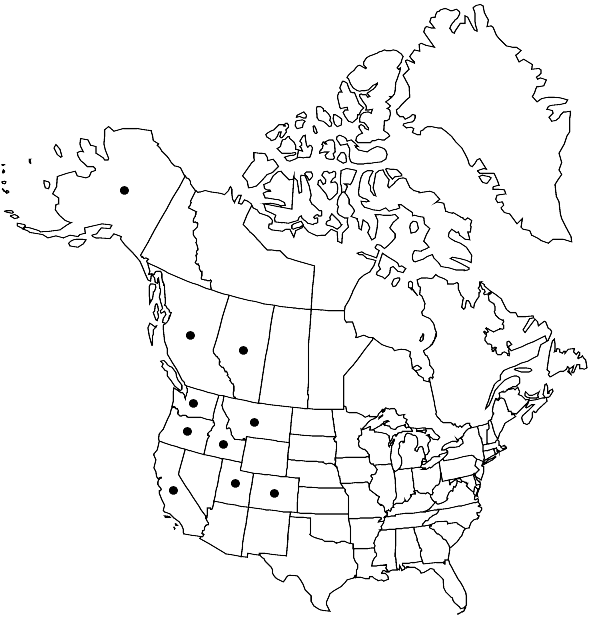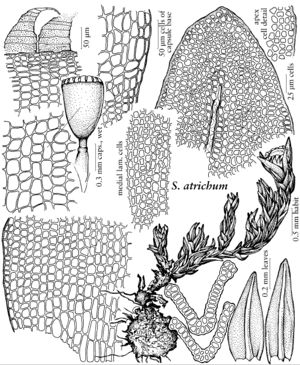Schistidium atrichum
Phytologia 33: 106. 1976,.
Plants in compact, often flat cushions or tufts, olivaceous, brown, or black. Stems 0.3–0.8 (–1.5) cm, central strand absent. Leaves erect, often curved towards stem when dry, ovate-ligulate to ovate-lanceolate, usually concave proximally, moderately keeled distally, 0.4–0.7(–0.8) mm, 1-stratose, sometimes with a few 2-stratose striae distally; margins plane or recurved to just before the apex, smooth, 1-stratose or 2-stratose, rarely 3-stratose; apices rounded or subacute; costa sub-percurrent or percurrent, rarely excurrent as a tiny, weakly papillose awn, smooth; basal marginal cells quadrate or short-rectangular; distal laminal cells ovate or short-rectangular, 7–9 µm wide, smooth, sinuose. Sexual condition autoicous. Capsule dark red-brown or light brown, short-cylindric or cupulate, rarely slightly wider at the mouth, 0.4–0.6(–0.8) mm, occasionally finely ribbed when dry; exothecial cells of various shapes, mainly elongate or isodiametric, walls thin or unevenly thickened, straight or curved, sometimes trigonous; stomata absent; peristome erect or patent, 100–200 µm, red-brown or red, papillose, weakly perforated. Spores 8–11 µm, smooth.
Phenology: Capsules mature late spring to early summer.
Habitat: Dry, often shaded mainly limestone rocks
Elevation: usually high elevations
Distribution

Alta., B.C., Alaska, Calif., Colo., Idaho, Mont., Oreg., Utah, Wash.
Discussion
Schistidium atrichum is the smallest North American species in the genus. Along with the small size of its leaves, stems, and capsules, the usual lack of awns on vegetative leaves and its habit of forming small, often flat cushions help to distinguish it. S. Flowers (1973) noted strong similarities between S. atrichum and S. dupretii, but the larger size and the consistently ribbed capsules separate S. dupretii.
Selected References
None.
